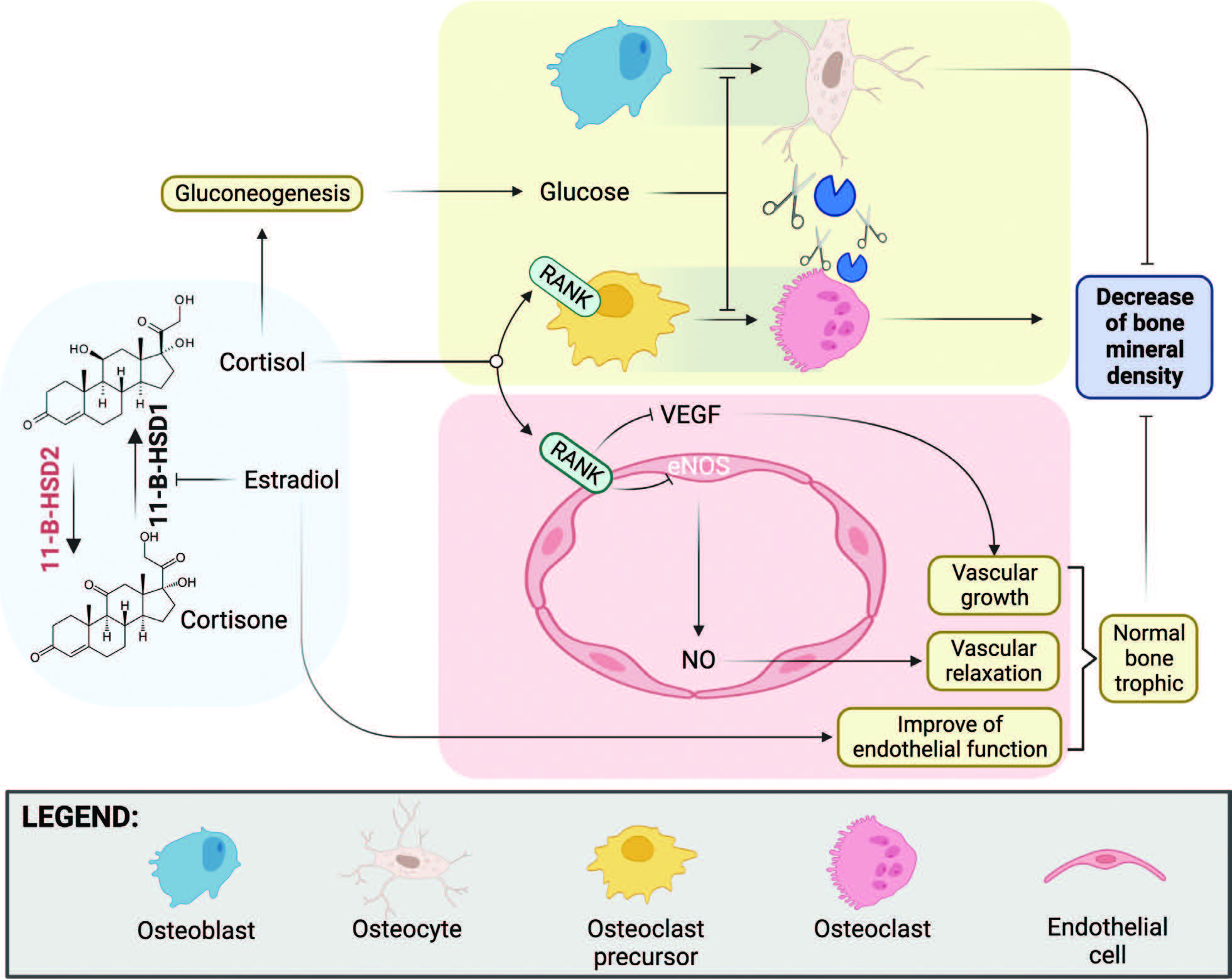Characteristics of the state of bone tissue in genetically modified mice with impaired enzymatic regulation of steroid hormone metabolism
DOI:
https://doi.org/10.3897/rrpharmacology.8.98779Abstract
Introduction: The aim was to evaluate the structural and functional changes of bone tissue in mice with null expression of 11β-HSD2 or both 11β-HSD2 and Apolipoprotein E.
Materials and methods: The experimental study was performed in 60 male mice, weighting 24–30 g. The animals were kept in accordance with the rules of laboratory practice for preclinical studies on the territory of the Russian Federation. Mice lacking 11β-HSD2 (Hsd2-/-) and male mice lacking 11β-HSD2 and Apolipoprotein E (Hsd2-/-/Apoe-/-) were used in the study. We studied and characterized the state of bone tissue, indicators of bone density, microcirculation in bone tissue, endothelial dysfunction coefficient, width of bone trabeculae, as well as serum concentrations of bone alkaline phosphatase, hydroxyproline, deoxyprinoline and expression levels of p53, Bcl2, Bax, eNOS genes.
Results and discussion: We showed that mice with the Hsd2-/- genotype with no expression of 11ß-HSD2 by the 6th month of life showed a statistically significant decrease in bone density, which progresses to the 7th and 8th months of life. At the 8th month of animal life, a decrease in bone density is accompanied by a statistically significant decrease in the level of microcirculation in the bone and an increase in the coefficient of endothelial dysfunction. Taking into account the relationship of endothelial dysfunction, atherogenesis and disorders in the processes of bone remodeling, in the framework of this study, we also assessed the state of bone tissue in double transgenes with the genotype Hsd2-/-/Apoe-/-, which lack the expression of both 11ß-HSD2 and Apolipoprotein E. In this study, we also saw increased activation of processes leading to disruption of bone remodeling processes. In the group of the animals with the genotype Hsd2-/-/Apoe-/-, we found statistically significant differences from the mice with no expression of 11ß-HSD2 in bone density and microcirculation, and the width of bone trabeculae. Also, a statistically significant increase in hydroxyproline and deoxyprinoline was found in the group of double transgenes, in the absence of significant changes in the concentration of bone alkaline phosphatase. This fact indicates a pronounced activation of bone resorption processes in the absence of activation of osteosynthesis processes, which leads to the detected violation of bone remodeling processes.
Conclusion: Thus, we have shown that a violation of the metabolic regulation of steroid hormone metabolism in animals with null expression of the 11ß-HSD2 (Hsd2-/- genotype) leads to the development of signs of osteoporosis – bone density decreases, which is accompanied by a decrease in the width of bone trabeculae, the level of microcirculation in bone tissue decreases simultaneously with an increase in the coefficient of endothelial dysfunction. The additional null expression of ApoE gene in double transgenes with the genotype Hsd2-/-/Apoe-/- leads to an increase in the severity of changes associated with a violation of bone remodeling processes and, in addition to a more pronounced change in bone tissue density, bone trabecular width, microcirculation and the coefficient of endothelial dysfunction leads to an increase in the concentration of biochemical markers of bone resorption. These changes indicate the important role of the enzyme 11ß-hydroxysteroid dehydrogenase type 2 in the processes of bone remodeling disorders.
Graphical abstract:
 Русский
Русский
 English
English

